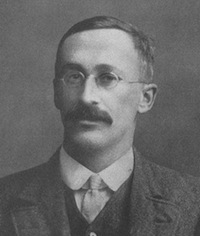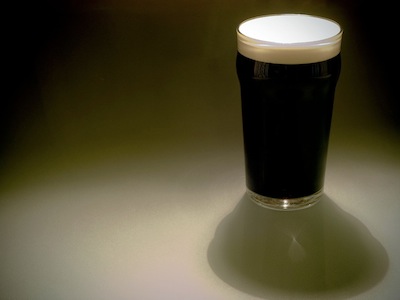A couple of weeks ago I was invited to join some statisticians for Friday night beer at an Irish pub. Nothing too unusual in this; there were probably scores of small groups of statisticians around the world drinking beer together that evening. I chose to have a Guinness, and as I sat down to enjoy it, I mentioned Student. No reaction. I persevered: “Student’s t-statistic?” “Yes, we all know that.” “The Guinness brewery?” Blank looks.
When I was a student, well aware that most people regarded statistics as a boring subject, I found comfort in the story of William Sealy Gossett (1876–1937) and his pseudonym. There he was, labouring away in a brewery in Ireland, secretly doing statistics, while his employer’s competitors were blissfully unaware of the economic value of our field to their business. A flash of colour in our generally pale discipline, and furthermore, it related to a product I consumed. I learned about Guinness on my first visit to a pub in England, when I was asked, “What’ll you have?” Faced with a bewildering variety of options, I pointed: “One of those please.” I nearly fainted when I saw what was being poured for me: thick dark brew bearing no resemblance to anything I’d ever seen before, much less drunk. A little over two years later, I was the proud owner of a copy of “Student’s” Collected Papers [CP], and have been a big fan of “Student” ever since. Learning to love Guinness took longer.
“Student” really was a quite remarkable man, though it is hard for us now to appreciate the basis of the description in Fisher’s obituary of him as “one of the most original minds in contemporary science.” First and foremost a Brewer, but the one i/c Statistics at Guinness, his position led him to take a close interest in both agricultural and industrial statistics. Guinness needs barley, and so the company was involved in varieties of barley, and of field experiments comparing them. This is readily apparent from the CP. Making beer is a complex industrial process, and so we’d expect “Student” to have shown a lot of interest in measurement, process and quality control. There is a little about this in the CP—the error of counting, errors of routine analysis—but not very much. In one of the first courses of statistics I taught which covered the t-distribution, I resolved to use “Student’s” original data to motivate and illustrate his t. But “Student” doesn’t use his own data, and I was left feeling disappointed, concluding that he had omitted any material from his own work to protect Guinness’s trade secrets.
In due course I learned that there was much more to “Student’s” scientific work than the contents of his CP. Gosset was a prolific correspondent, and a lot of his correspondence with Karl Pearson, R. A. Fisher and E. S. Pearson is now available. It is great to read. One of my favourites is where Fisher actually writes down a linear model for Gossett and explains all the details: Ap+Bq, with N(0, σ2) errors, to be fitted by least squares to an m×n array (Xpq) of yields from m varieties planted in each of n trials. It’s worth reading.
However, the real gold-mine can be found in the Guinness archives. Apparently we can find there over 350 reports written by Gosset, on every topic that you might imagine interested a senior scientist-executive in a large brewery: experiments involving hops, wood (for casks), coal (for malting), advertising, marketing and sales (of the product), demography and epidemiology (of his workforce), and many aspects of the brewing process. Papers drawing on this material have started to come out over the last few years, but we can expect many more.
I learned about the archives while attending the 58th World Statistics Congress (ISI 2011) in Dublin last year. Not only did I hear excellent talks on “Student” and other luminaries of Irish statistics, I had the opportunity to take the Guinness Storehouse Tour, Ireland’s number one visitor attraction. There, I learned how the four ingredients of my title are combined to form what Colm Tóibín calls “old, heavy, bitter and divine,” and I could drink some at the end of my tour in the spectacular Gravity Bar. Along the way I saw William Sealy Gosset the Brewer in several group photographs.
“Student” gave us the first small sample theory, including the t-distribution. He pioneered simulation, he tried (but failed) to interest Fisher in robustness, he suggested the notion of power to Egon Pearson, he promoted systematic designs, and much more. He was a major figure in Statistics, and a thoroughly decent chap too: everyone liked him. Next time you drink beer, think of him; better still, sample a Guinness.


Comments on “Terence’s Stuff: Barley, hops, yeast and water”